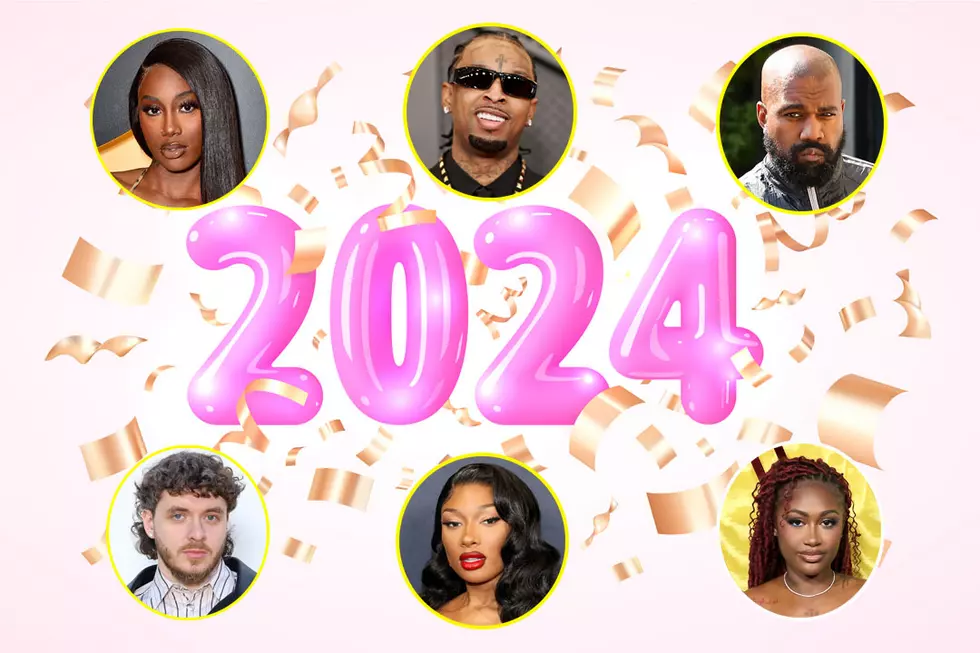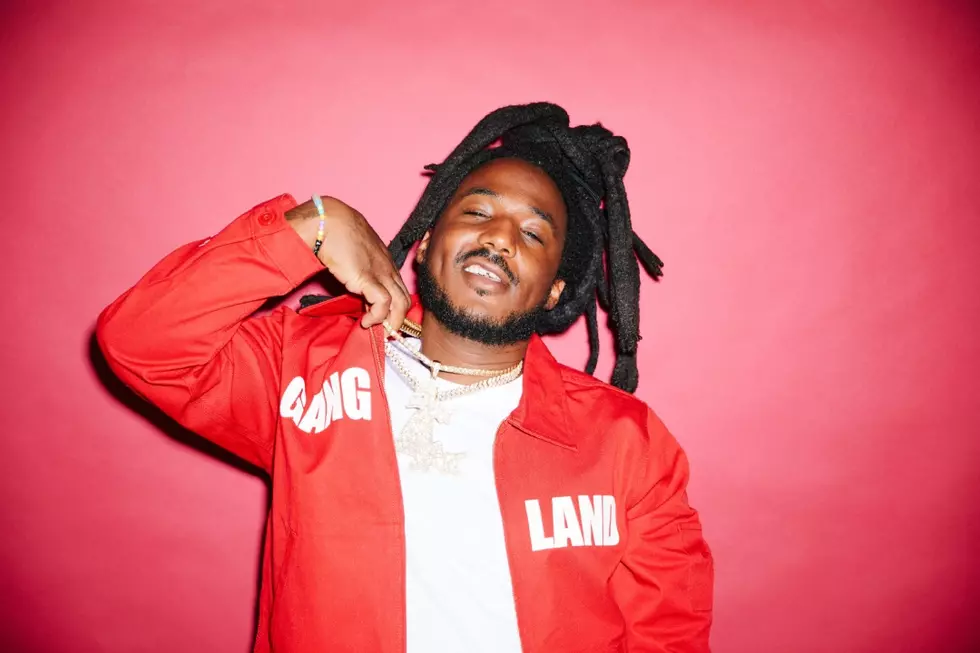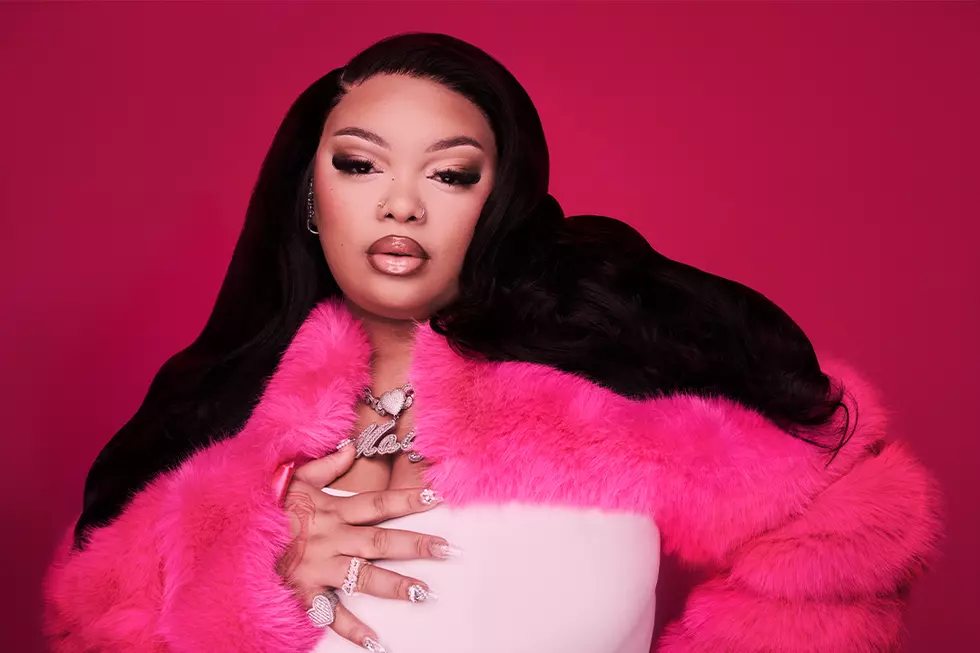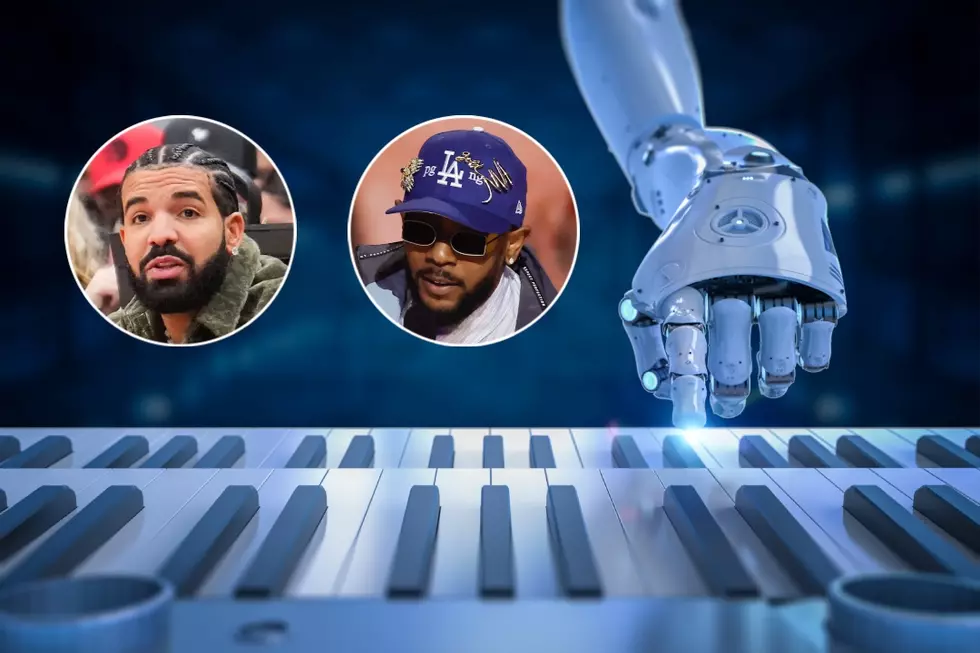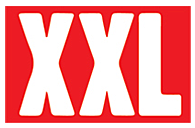
Lemar and Dauley Talk Success, Relationship with KiD CuDi and Upcoming Collection
In 2003, many avid streetwear supporters became tired of the same old design schemes in urban fashion. In came Kareem Blair and Daniel “Manhattan” Pierre with their brand, Lemar and Dauley. Together the designers new brand would boldly go where few had went before in streetwear fashion, integrating vibrant color schemes with their design patterns.
A decade later, Lemar and Dauley's distinct designs continue to make an impact in plenty of today's popular pieces. Speaking with XXL's The Good Life, Blair and Pierre discuss linking with KiD CuDi, Robin Williams wearing the brand on TRL, sparking the pink trend in hip-hop and more. —Christian Mordi (@mordi_thecomeup)
XXL: When did you know you wanted to make fashion a profession?
Kareem Blair: I guess around 2001 and then our line finally hit the market in 2003.
Do you remember one of the first big moments you had with the line?
Daniel Pierre: Probably when Robin Williams wore our Mr. Rogers tee on TRL.
Kareem Blair: It was really crazy for many reasons. One being it was Robin Williams, who is a huge Hollywood star. The other being we had no idea he was going to wear the shirt. He just showed up on the show with our merch on.
Tell us a little about your childhood. How was it where you were from and how did that effect your fashion sense or savvy?
KB: Well I grew up in Bed-Stuy. Brooklyn is a special place where a lot of different styles stem from. I was in Downtown Brooklyn a lot growing up. At that point only older dudes had Air Jordans. Everyone wears them now, but back then it was something a lot more special. We incorporated a lot of those special things we saw growing up into the brand.
DP: Growing up in Manhattan, it allowed me to a see a lot of trends grow and die. I saw other peoples' mistakes and it taught me to think more outside the box with what I was doing. I also hung out in Harlem a lot, and it allowed me to keep my finger on the pulse of what was trending. I think that's what made us work, even though we came from different backgrounds we had the same sensibilities.
KB: I mean even though people wore Penny's and Jordans, I was a Gap baby. I’m talking raising a baby up until he was 18 or 19 wearing predominately all Gap. The urban market was just starting to surface.
Were there any hot urban lines you guys wore sporadically?
KB: The times were different. Only brands you wore back then was Gap, Eddie Bauer, Columbia, Timberland, Nautica. You know, [Ralph Lauren] Polo, Tommy Hilfiger.
DP: One of the things that was very important to the growth of Lemar and Dualey was we were so upset with the status of urban wear at the time. People really weren’t even trying any more. There was Phat Farm, Akademiks, and nothing against those brands, but it got to the point where it was over saturated. It got stale and no one was standing out.
That's when I started looking into brands no one else was into. When you are in high school, and you wear a brand no one has heard of, it was corny. As you grow older, you past that and you search for things that are dope, regardless of name. You want to put someone “on” to a line. That's how you become a trendsetter.
You guys were one of the first brands that really grabbed hold of that colorful, vibrant wave during that time period in fashion. A lot of your shirts had some aggressive color schemes and it all worked. I remember being a young kid in middle school and seeing your line and not knowing what sneakers I could wear with the shirt. All I knew was it was too hot not to buy. [Laughs]
KB: That was the point of it. That's how you compete with $100 million lines. We were focused on killing the rack. We wanted a person to walk into a store and know immediately it was our work, or if they were new to our work look into the line. For example, at that time everyone was wearing camo and it became stale so we went to fuchsia and colors of that nature.
DP: I will say I was the first person in Harlem to rock pink like that. Killa Cam is my dude, but that was me. What Killa did was take it to another level and take it mainstream. The point of wearing the color was to show that I was not afraid when it came to style. Being fearless was important to me. When you look at some of the greats in fashion, Karl Lagerfeld for example was guy that pushed the limits. Now you see those new artists like A$AP Rocky who isn’t afraid to be different. Being different spoke to our brand's character.
What else would you attribute to your success?
DP: I remember KB and I back in the day when we shared an apartment having these conversations about what makes a brand special. We were young dudes at the time and I don’t think we knew it all then, but we were trying to figure it all out. We talked about the mythology behind a brand. Many of the brands that are huge right now are such because you never know what they will do next. Every season was a surprise. That is the work of legends.
You guys also went into the sneaker realm. How did that come to pass?
KB: Actually that came about when a lot of the people behind brands like Adidas and DC shoes were fans of the brand. We got flown out to a few places and saw some fabrics and then focused on making some memorable footwear. We were the first streetwear brand they dropped a collabo with that was not skate origin.
You guys were one of the first brands I remember to have link with Kid Cudi. How did you link with him?
KB: He was like family, and is still the same to this day. A super close friend. He was close to one of our people who does our PR. He reached and we were like lets do it. I think he had just dropped “Day N Night,” less than a month before our shoot and just began to bubble on MySpace.
Why was Andre Agassi so special to your guys?
KB: Well he encompassed the Lemar and Dualey spirit. He was rebelling against the status quo. In our world, I felt like we were doing the exact same thing.
DP: I think another thing that made us want to do Agassi shirts was due to the fact no one could find his shoes at the time. No one could get them. The sneaker culture played a lot into our decision making.
What you guys did at the time was epic and unheard of really in streetwear. Did you guys ever get a chance to soak it up really?
KB: Not really I was just focused on growing. I was focused on getting our first 100,000, then 200,000, then a million. You don’t really realize that what you are accomplishing at 24 is unprecedented. I mean we don’t come from money, we are from blue collar, two job families. To do what we did on our own tutelage was an awesome feeling. I cannot front though, buying huge gold chains was amazing. Living in the sky, and your only neighbor is the Hudson River, amazing.
DP: I will say things did clash sometimes. Sometimes its hard to take people out of the mentality of being broke. Neither of us went to school for what we did, so there was some ignorance involved. There were times when we were super aggressive when we didn't need to be. We didn't trust a lot of people. I wore a bulletproof vest. Those were different times.
Whats next for the line?
DP: We are focused on taking our line again where a lot of people aren't ready to go. A little hippy, a play on aquatic sports on some pieces, but looking to change the game.
More From XXL


